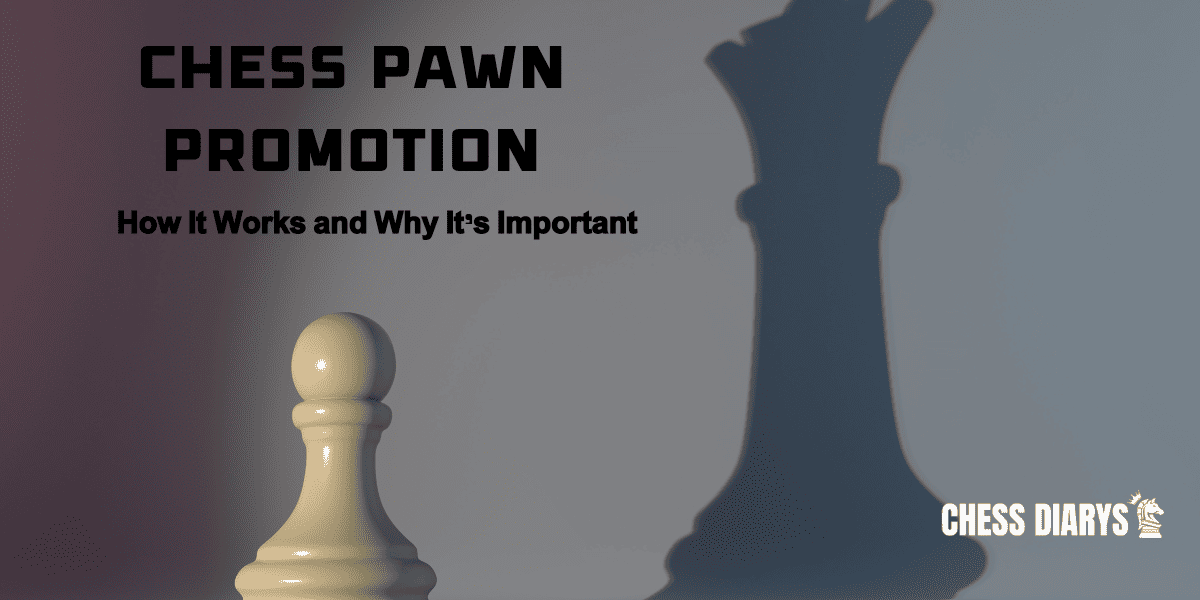In chess, one of the most exciting and strategic moments in the game is the concept of pawn promotion. This rule allows a pawn, the weakest and most numerous piece on the board, to transform into a more powerful piece, offering players a chance to change the tide of the game. In this article, we’ll dive into the details of chess pawn promotion, how it works, and its importance in both casual and professional chess.
What Is Pawn Promotion in Chess?
When a pawn successfully makes its way to the opponent’s eighth rank, the final row on their side of the board, then comes the time for promotion. A player still on this square can promote the pawn to any other piece of his choice, except a king. It means a pawn can be changed into a queen, a rook, a knight, or a bishop.
Promotion to a queen is the most common due to the fact that it is the most powerful piece in chess. It combines both the abilities of the rook and the bishop. In some instances, however, depending on the position of the pieces on the board, it may be more advantageous to promote into another piece, like a knight.

Fig: Chess pawn promotion
The Process of Pawn Promotion
The process of chess pawn promotion is simple but can have a huge impact on the game. When any pawn reaches the eighth rank, the player immediately declares into which piece the pawn shall be promoted. The promoted piece then takes the place of the pawn on the square, and the game continues normally.
There are many reasons that players pick a queen, based on its incredible range and mobility. Very seldom, underpromotion-or picking anything other than a queen-can be the strategic thing to do, especially if the unique movement of the knight is needed in order to make an immediate checkmate or other tactical advantage.
Pawn Promotion: Strategic Significance
The rule of pawn promotion in chess is there for the sole purpose of serving as a form of reward to the players who successfully can advance their pawns up the board, which is no small feat, especially within a closely fought match. Being able to turn this into a formidable piece often changes the direction of the outcome and is a key part of endgame strategy.
Endgame Advantage: The nearby pawn that is threatening to promote may turn your opponent’s play into defensive, which again gives you an edge. Sometimes in this position, forcing a promotion often leads to a win.
Forcing an Exchange: When you promote a pawn into a queen or some other strong piece, forcing your opponent to give away one of their pieces as a sacrifice for the elimination of your promoted piece-this would create a material advantage in your favor.
Multi-Pawn Promotion: Sometimes, in a few rare but interesting situations, the player promotes more than one pawn. As a rule, this brings about an almost unbeatable advantage and proves the fact that taking care of the pawns throughout the game is crucial.
Choosing Underpromotion: The promotion of a pawn to a queen isn’t always the best move. In some endgame positions, for instance, underpromotion to a knight can come with a shocking checkmate due to the fact that it can jump over other pieces.
Common Mistakes
While chess pawn promotion is rather simple, some of the common mistakes which even beginners make while trying to promote pawns include the following:
- Rushing a Pawn Promotion: Beginners may rapidly advance their pawns to the eighth rank without giving any afterthoughts. Moving too fast without protection for your pawn may allow your opponent to capture it before its promotion.
- Ignoring Opponent’s Promotion Threats: While it is important to move your pawns forward, you also need to pay attention to your opponent’s pawns. The opponent getting to promote their pawn could give a sudden turn when you are least prepared.
- Not Being Aware of the Power of Underpromotion : Most players never consider underpromoting and just click a queen by default. Sometimes, it is a winning move to underpromote to a knight, but then again, it gets missed due to mere habit.
How to Prepare for Pawn Promotion
If you want to improve your game and take advantage of chess pawn promotion, here are some suggestions:
- Plan Your Pawn Structure Early: Your pawns are important during the whole game. Arrange them in a way that they protect each other and have a clear path towards the eighth rank.
- Control Key Squares: A lot of the promotions happen where you are controlling the squares around your opponent’s pawns, and they are not able to advance while you are advancing your pawns. At the same time, dominating some important squares gives you a great chance of successfully promoting a pawn.
- Know When to Sacrifice: Many times, in the middle game, you are sacrificing material when it can be turned into a very strong passed pawn that is promoted later on. Do not be afraid to trade off your pieces if it means bringing a pawn further ahead to promote it.
- Practice of Endgames: Most of the time, pawn promotion takes place in the endgame. Hence, practicing endgames sharpens your ability to convert any potential promotion into victory.
Conclusion:
Pawn promotion in chess is interestingly awesome in that even the humblest pawn may turn into a game-winner. Be it casual playing or a tournament, mastering this piece of art may give one a clear lead over one’s opponents. Be thoughtful in your pawn advances, learn the power of both promotion and underpromotion, and always be on the lookout for pawns that could promote as you head into the endgame.
In this way, you can capitalize on one of the most exciting and rewarding rules in chess: that of transforming a pawn into a queen, knight, rook, or bishop and paving your path to victory!









